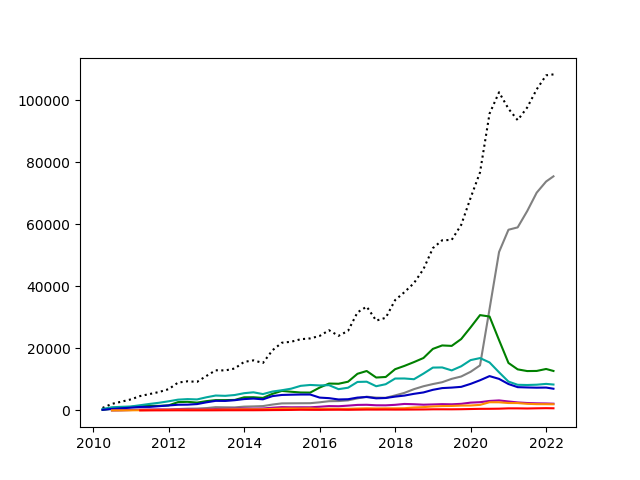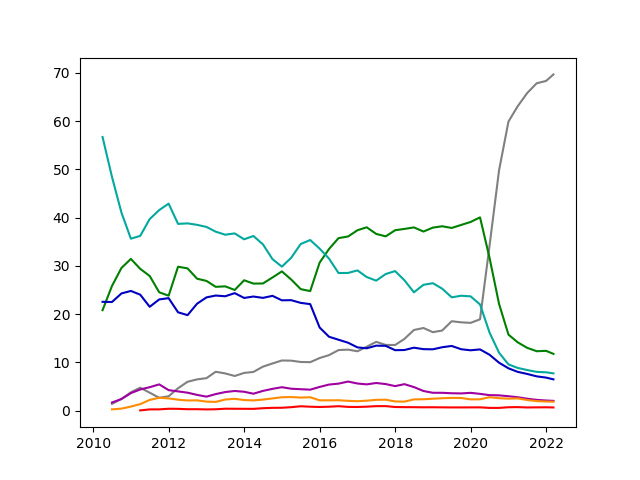I was asked to prepare more stats similar to these charts.
So I present numbers of active users by colors, both absolute and relative, for lifetime of Codeforces.
Absolute users count
The dotted line indicates total number of active users. 
Relative users count

Relative cumulative users count

Assumptions
Active users means users who:
- participated in a rated contest in 6 months preceding given date
- participated in at least 1 rated contest
Measurements are taken every 3 months.
Definitions of colors are from today, for example green is 1200-1399.
Tools
Tooling is contained in this repo. It consists of:
- java application downloading and caching contests' results, calculating data rows
- python script generating the plots
Repo also contains the data produced by java application.
Evening update
Since system penalty indeed affects rating of new users, it would be reasonable to make another probe. This is absolute count as before, but now 6 contests are required to consider a user active.











